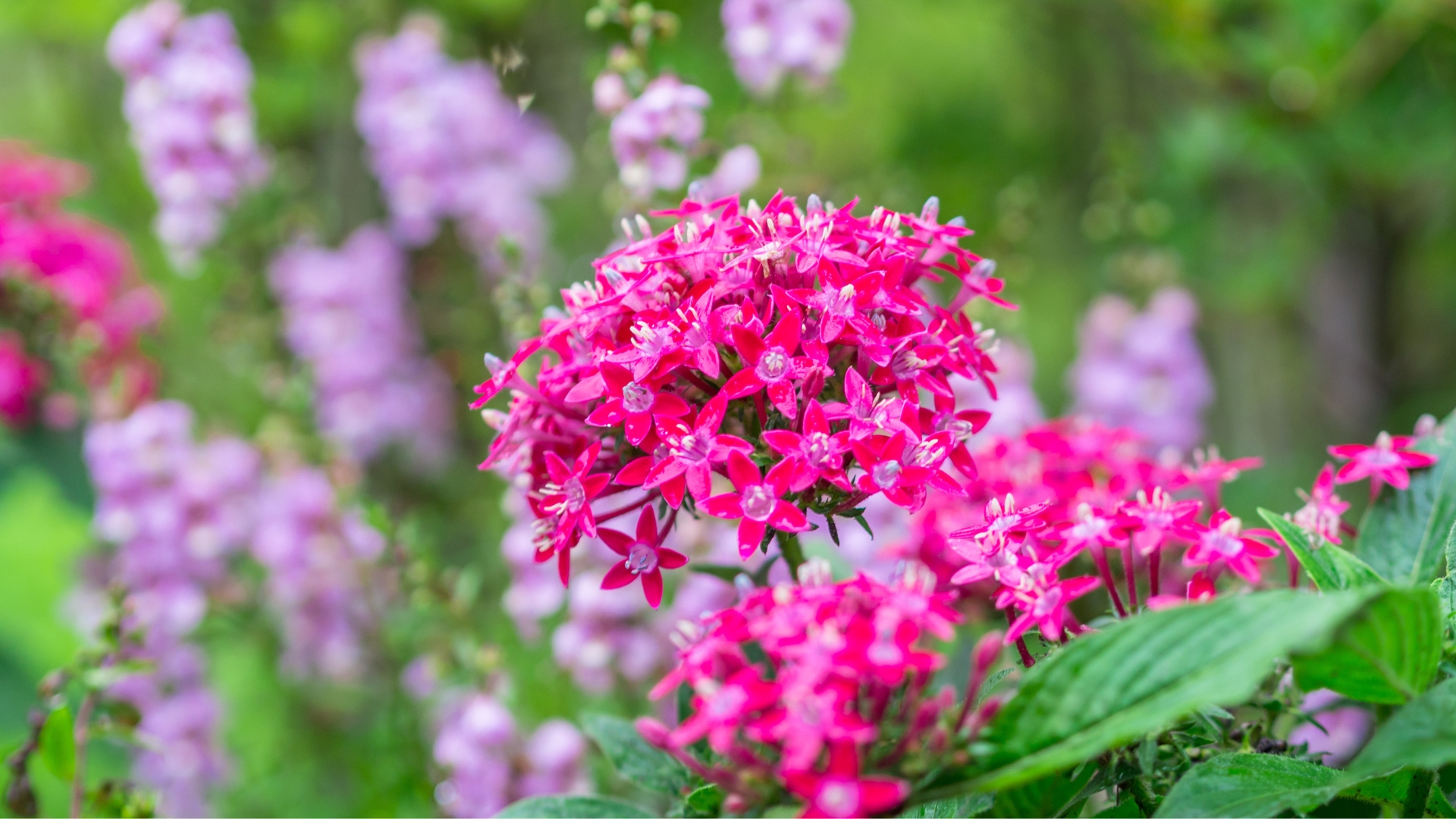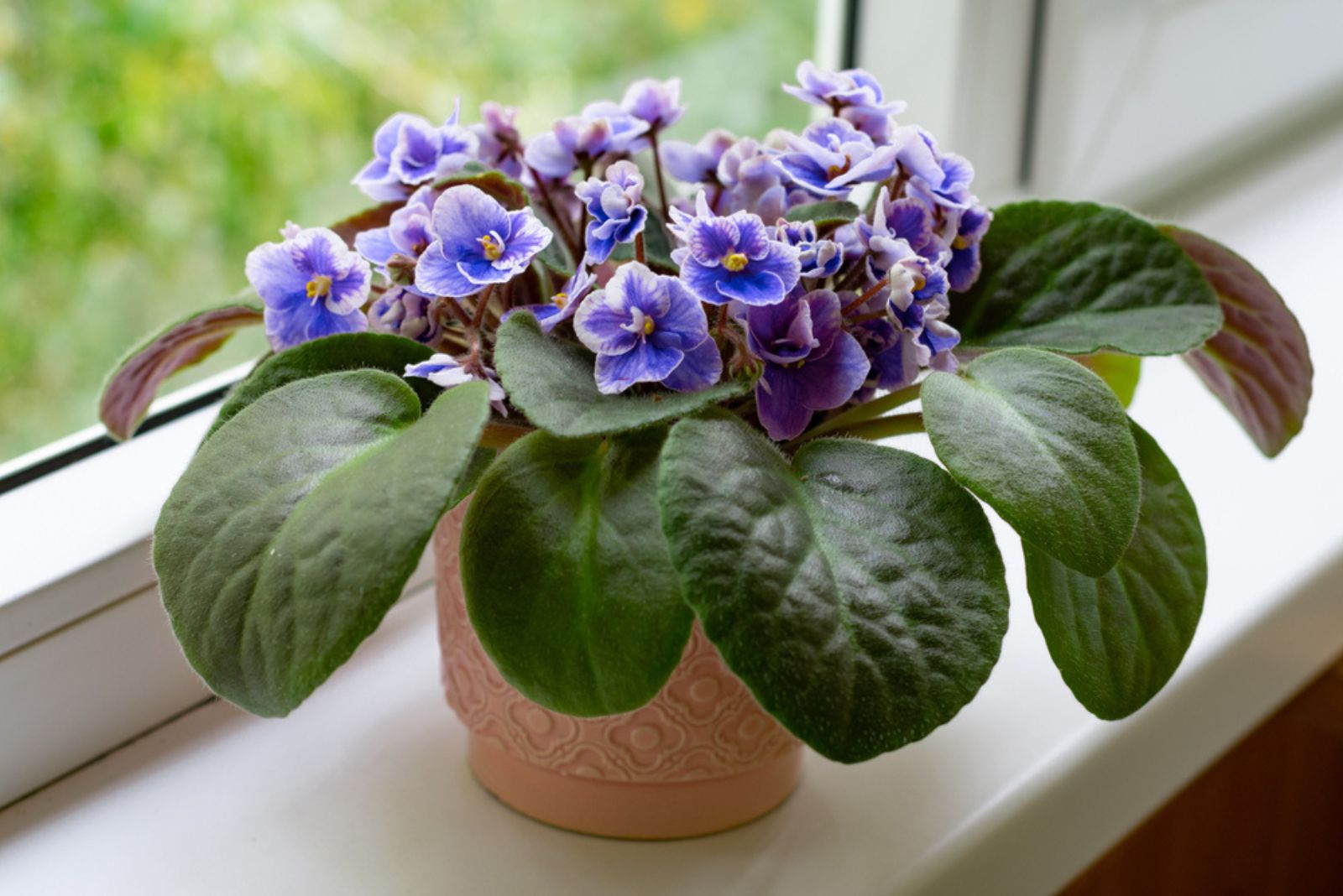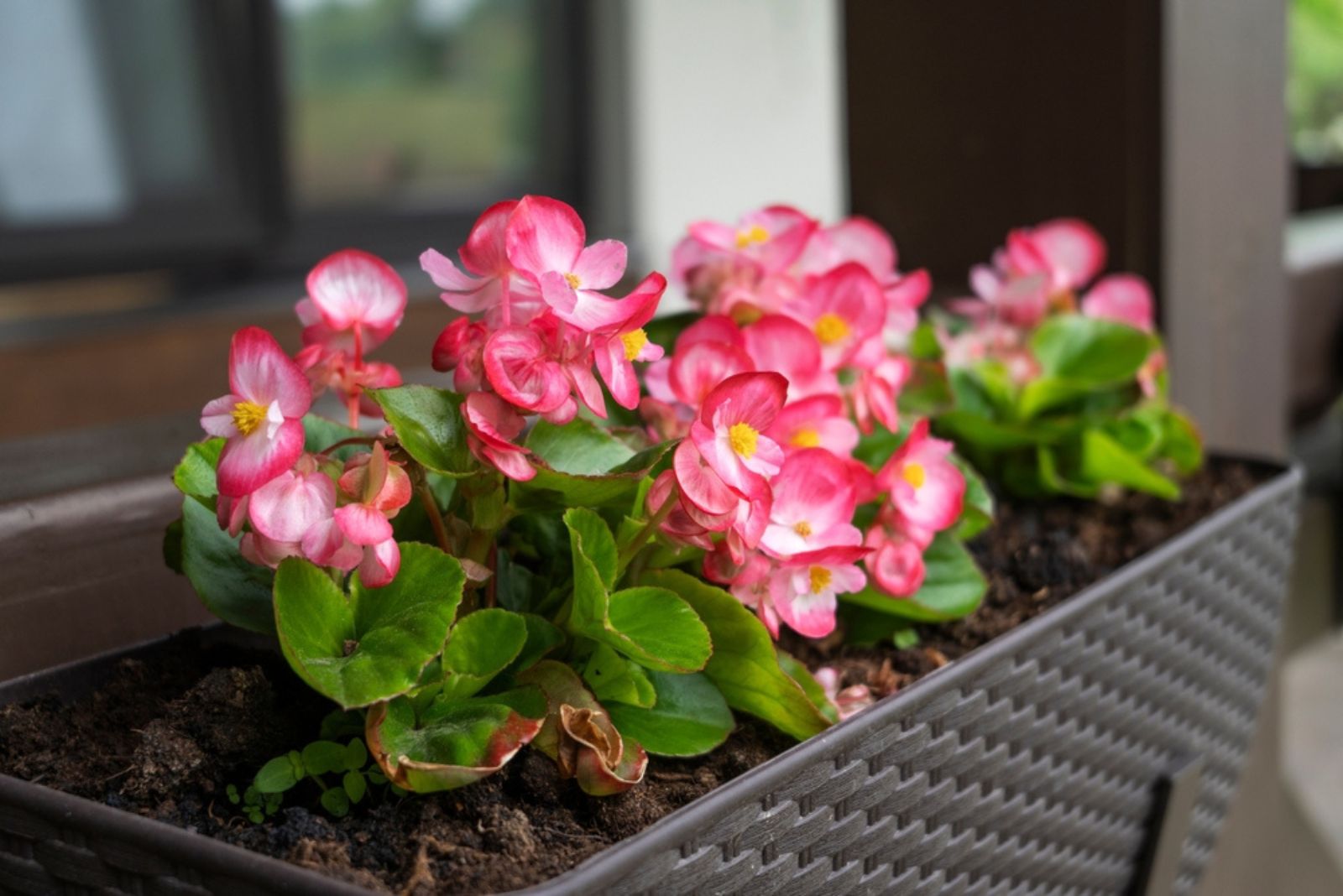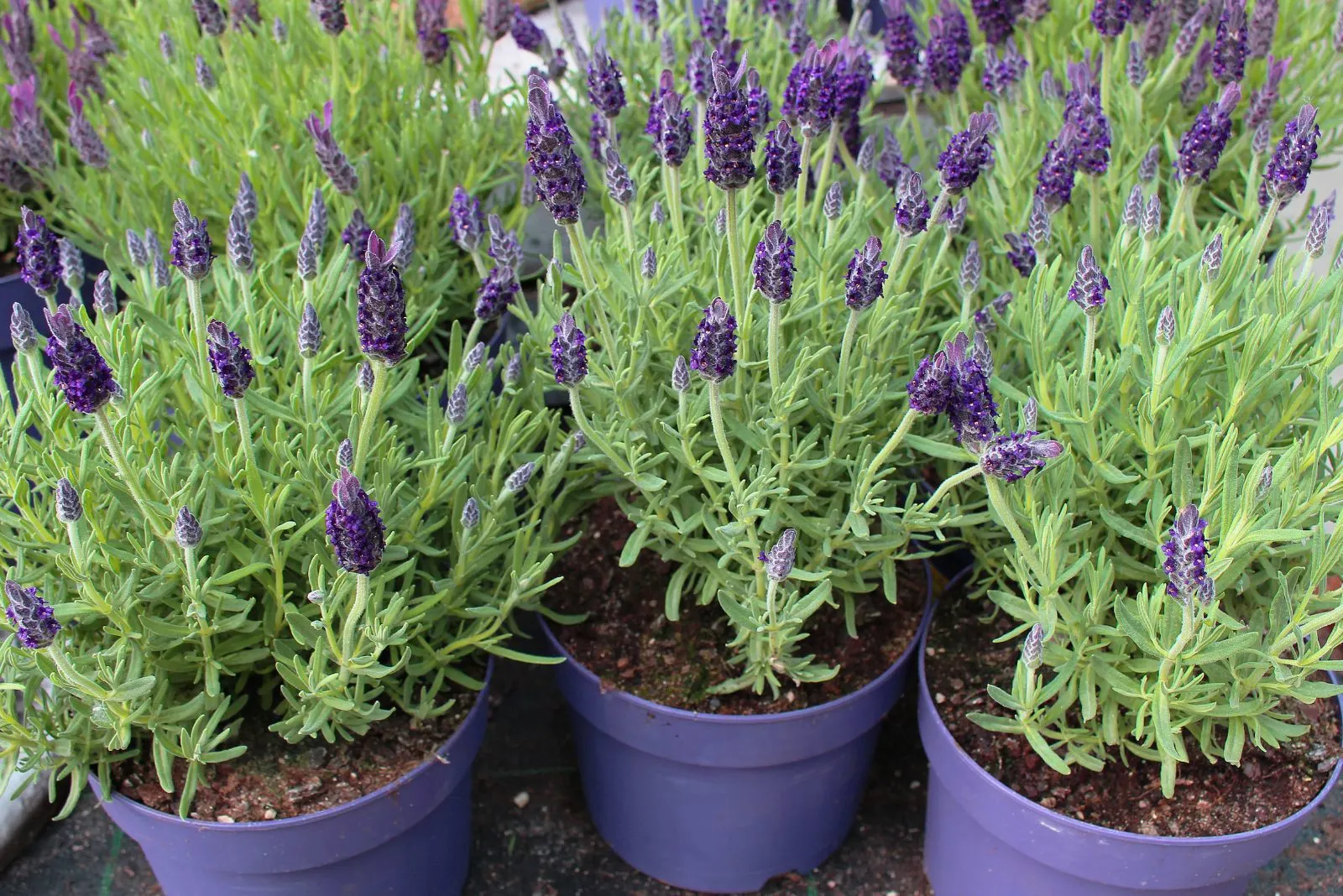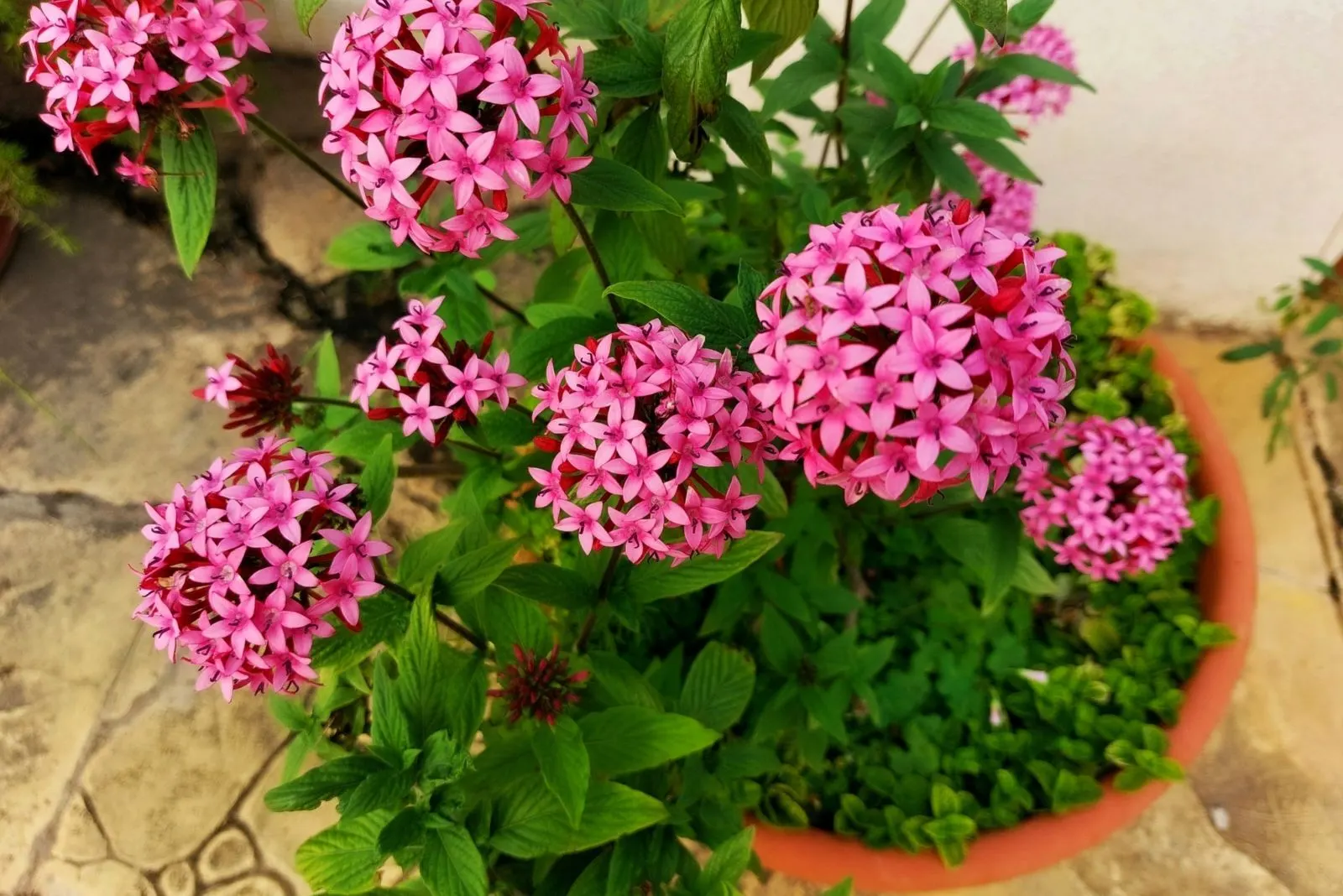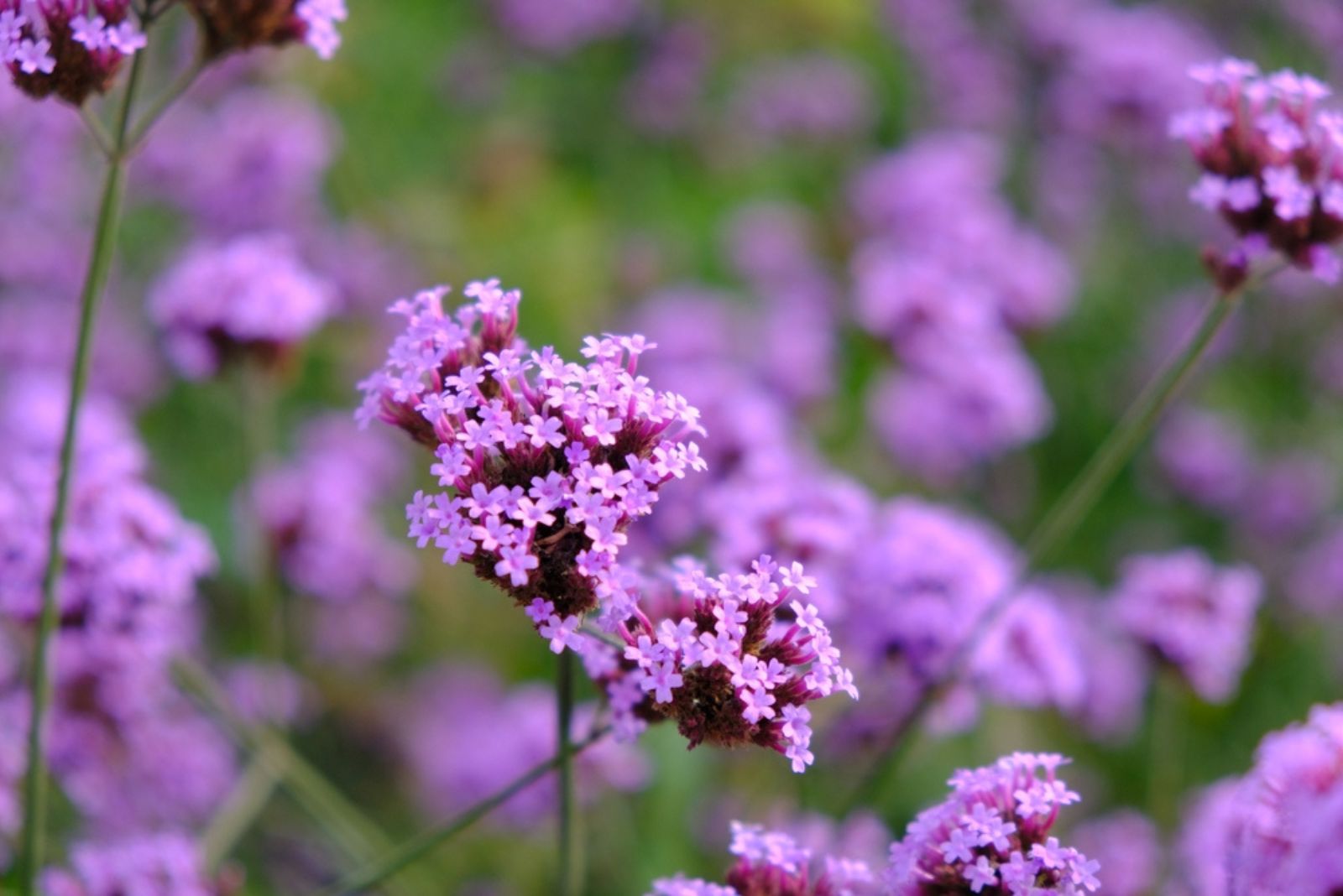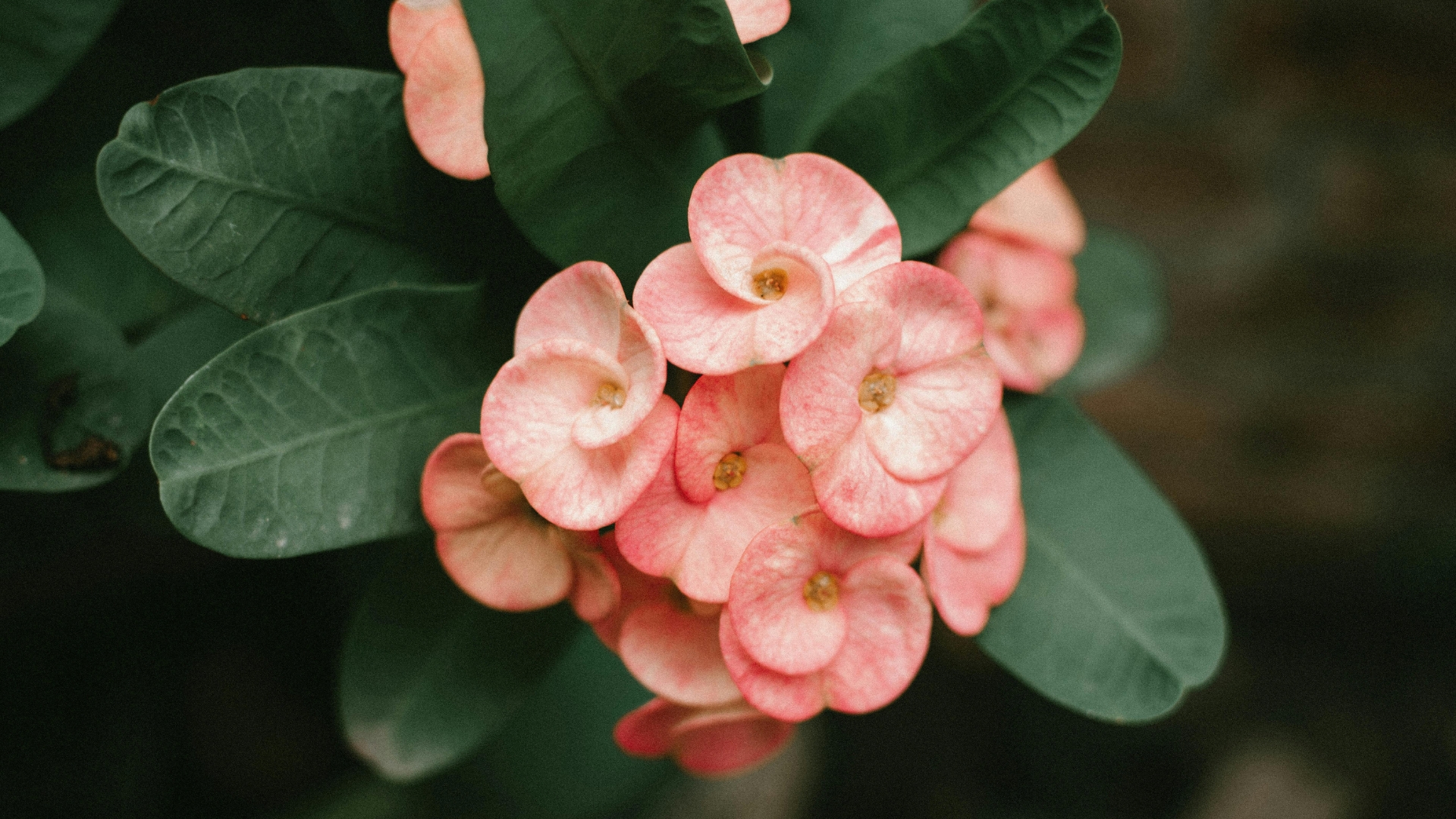Flowers are there to bring life to our gardens and lives. There are plants for every season, but some can bloom year round with proper care.
You might need to take them inside or they may bloom all year only in certain climates, but that doesn’t mean you can’t enjoy their blossoms with a little bit of care.
Just pick the right one for your area, take them inside if their requirements dictate it, and give them everything they need for a colorful year.
Let’s get started!
1. African Violet
[table id=783 /]
African violets bring so much charm and elegance to your window sills, especially when in bloom.
I love these plants because they can bloom 365 days a year with a little bit of proper care. Give them as much light as you can, but make sure it’s not direct or it will burn them.
Don’t water them too much. Irrigate them whenever their soil is slightly dry, let the excess drain through the pothole, and that’s it.
Finally, you’ll have to use the best soil for african violets, such as a mixture of coco coir, vermiculite, and earthworm castings.
With these things in mind, you’ll easily brighten up your indoor space with white, pink, mauve, or bicolor blossoms.
2. Begonia
[table id=784 /]
If you know how to overwinter begonias, or you’re willing to learn, you’ll be able to enjoy their flowers all year round.
And the best part is that they don’t require too much care. Keep them in indirect light, fertile and well-draining soil, and water them every couple of days while young and once a week when they establish. In winter, you can irrigate them every 10 days or so.
However, you’re best bet is to check the soil and, if the top part is dry, you can give them some moisture.
Do this, and you’ll enjoy their colorful blossoms even in winter.
3. Geranium
[table id=785 /]
You can save your geraniums in fall as houseplants and enjoy their colorful blossoms all year long.
Take them before the first frost hits, place them in a spot with indirect sunlight, and water them whenever the top portion of their substrate is dry.
And once spring arrives, you can take them outdoors to a spot with full sun for the brightest colors.
4. Lavender
[table id=786 /]
Believe it or not, lavender is a plant that can flower all year long with a little bit of extra care. You’ll have to turn to growing lavender indoors, but once you smell its fragrance all over your home and see its purple flower stalks, you’ll never look back.
Place it near your brightest window, water it only when the top part of the substrate is dry (or every 2-3 weeks), and don’t plant it in an extremely fertile soil. The same goes if you want to grow it outdoors.
But know that it won’t flower outside all year long if you live in a colder climate.
5. Penta
[table id=787 /]
Pentas can flower all year long and come in an array of colors, although my favorites are definitely the starry balls of white blossoms.
Also known as the Egyptian star, pentas are on the list of gorgeous star-shaped flowers and can bloom all year long with a little bit of care.
Keep them in a spot with bright light throughout the day and give them some afternoon shade, especially in summer.
Give them plenty of water throughout the week, but always check the top 1-2 inches of soil before irrigating them. If it’s dry, you can give them something to drink.
And finally, you don’t have to be too careful about the type of soil you grow them in as long as it’s well-draining.
6. Seaside Daisy
[table id=788 /]
This plant is perfect for coastal areas where it will adorn rock gardens and flower beds with its year-long lavender petals and yellow centers.
It thrives in direct sunlight throughout the day but it does benefit from afternoon shade, especially in hotter regions. Water it about once a week if there’s no rain and make sure its substrate is well-draining.
Remember that it can bloom year round only in climates with mild winters.
7. Verbena
[table id=789 /]
Verbena is on the list of colorful annuals that can bloom constantly, although you don’t have to limit yourself to these plants; you can grow some flowering perennials such as lavender and begonias.
But if you just love the color verbena can give you (and I’m talking about white, pink, purple, blue, apricot, red, and bicolors), you can add some to your garden or home.
In fact, it is a perennial in warm climates, and if you give it at least 8-10 hours of direct sunlight (or supplement it with artificial lighting), keep it moist but never wet, and plant it in a fertile and well-drained soil, you’ll enjoy their flowers all year long.
Of course, various weather conditions can make it drop its blossoms for a period, but it will quickly spring right back up.
8. Cape Primrose
Cape Primrose is a stunning plant that can flower year-round with just a little TLC. Its delicate, trumpet-shaped blossoms come in shades of purple, pink, white, and blue, bringing a soft elegance to any indoor space.
To keep it blooming non-stop, place it in bright, indirect light and water it only when the top inch of soil dries out. It thrives in well-draining, slightly acidic soil, and a little deadheading will encourage even more flowers.
What makes Cape Primrose truly special is how effortless it is to care for. Unlike some fussy flowering plants, it doesn’t need a strict watering schedule or constant attention. Just keep it warm, feed it lightly every few weeks, and it will reward you with vibrant blooms all year long!
9. Crown Of Thorns
If you want a flower that truly thrives on neglect, Crown of Thorns is the one for you! This tough, drought-tolerant succulent produces bright red, pink, or yellow blooms year-round, as long as it gets enough light.
It loves a sunny window or a warm outdoor spot, and the best part? It barely needs watering—just a drink every couple of weeks will keep it happy.
Crown of Thorns is perfect for those who forget to water their plants but still want continuous flowers. Its blooms last for weeks, and with proper care, new ones will pop up almost instantly.
Just make sure to wear gloves when handling it, as its thorny stems can be a little sharp—but those striking flowers make it well worth it!

